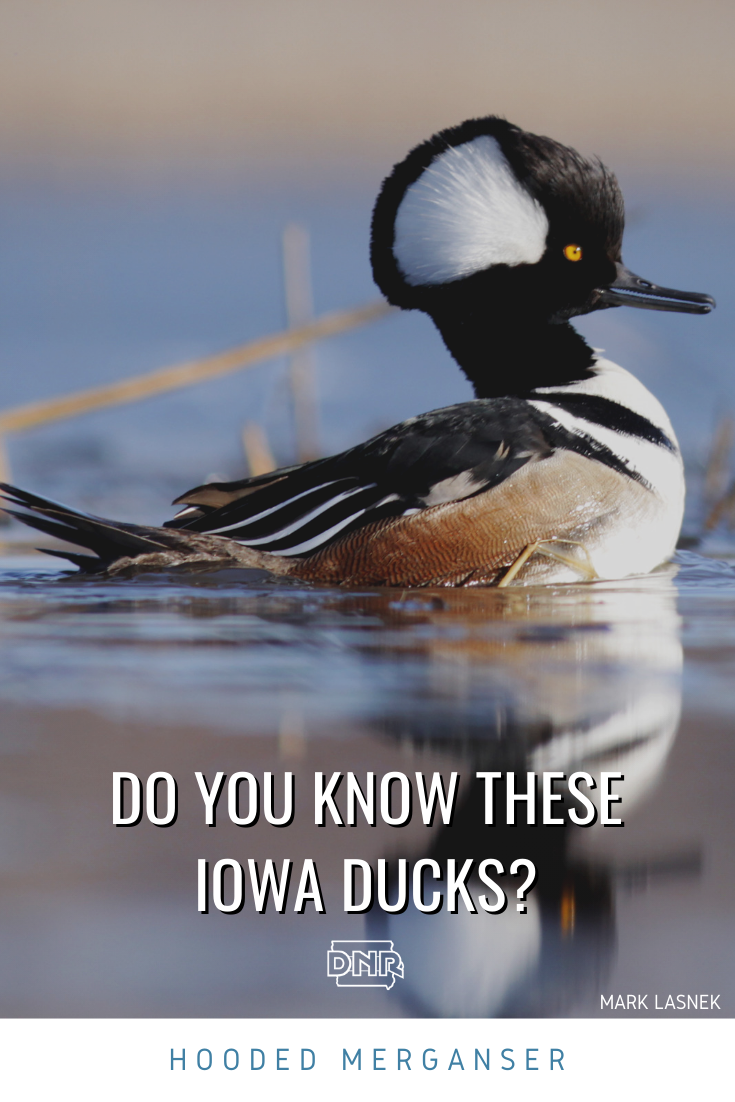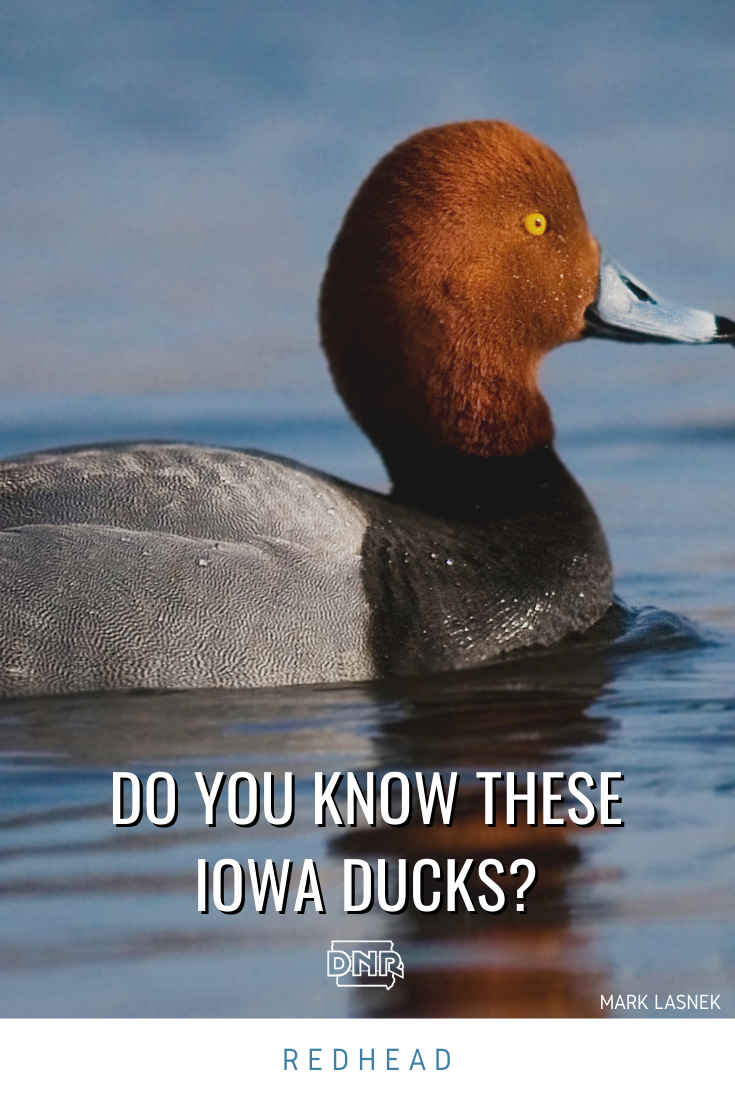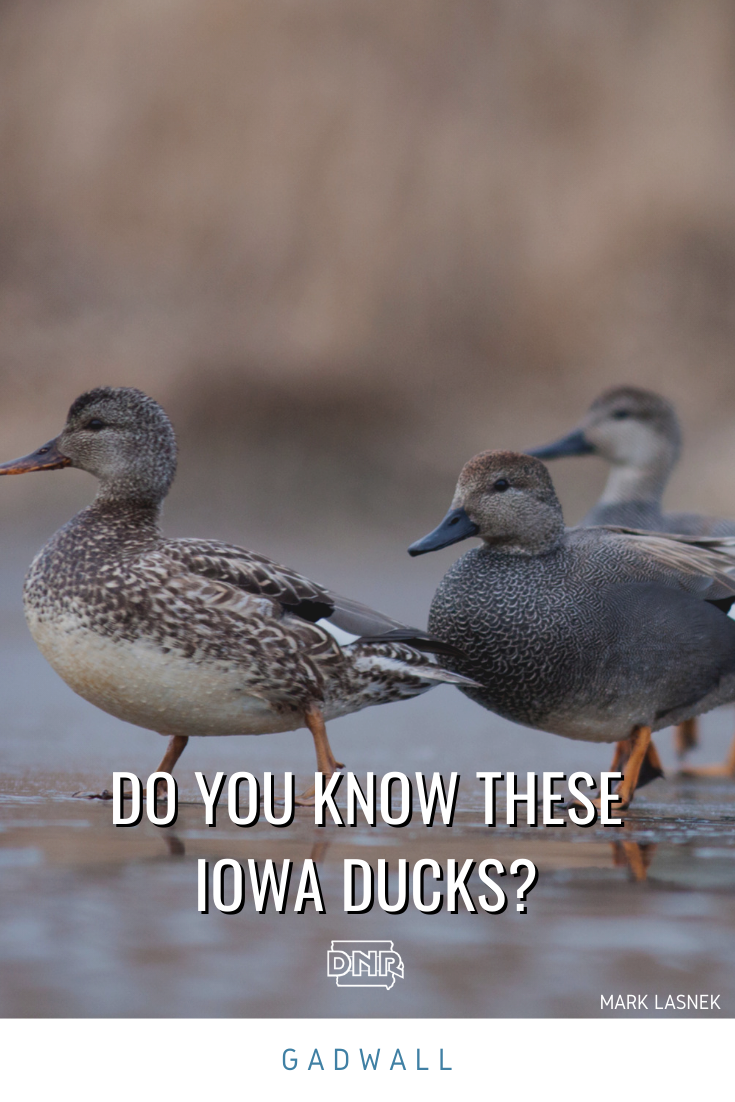Some ducks in Iowa aren’t as common as mallards, wood ducks or blue-winged teals. Check out these duck species you might not know live here:
Hooded mergansers
Relatively common throughout the state, hooded mergansers live in spots people don’t often encounter them. These small ducks with thin, serrated bills have heads that look oversized due to their collapsible fan-shaped crest.
Black with a white breast, male hooded mergansers look much different than their female counterparts who have gray and brown feathers with tawny-cinnamon tones on their heads.
These ducks can live in a wide range of areas throughout the country, from spruce-fir forests in the northwest portion of the U.S. to oak-cypress forests in the southeast. While they’re migrating, they will stop in a wide range of habitats with open waters.
Hooded mergansers prefer forested wetlands for breeding. They may also nest in treeless wetlands where nest boxes have been set up. These birds nest in tree cavities close to water and 10 to 50 feet off the ground. Female ducks will lay five to 13 eggs at a time. Ducklings can dive for food right after leaving the nest at just one day old.
Redheads
A few breeding pairs of redhead ducks nest in the northern portion of Iowa. Since they prefer large wetland complexes, the upper part of the state is the only spot suitable for these birds. These medium-sized ducks have moderately large gray bills with black tips. Males have cinnamon-colored heads with a black breast and tail and gray body. Females sport more plain colors with brown bodies. This helps the females blend in with the things around their nests.
Redheads prefer freshwater lakes, reservoirs, river pools and bays. During the winter, they flock to the Gulf of Mexico and feed on seagrass. Breeding occurs in seasonal ponds and wetlands in the Midwest. These ducks tend to nest on reservoirs, ponds, streams and cropland ponds.
Favorite snacks of the redheads include aquatic plants and invertebrates. These diving ducks also use the dabbling technique, tipping forward in shallow water, to snatch food. Redheads fly faster than most ducks.
Gadwall
Like redheads, gadwalls in Iowa are scattered throughout the northern part of the state. About the same size as mallards, gadwalls have large, square heads. The males flash a gray-brown color with a black patch at the tail while females wear brown and buff-colored feathers with a thin orange edge on their bills. In flight, you can see the white wing patch.
Gadwalls prefer well-vegetated wetlands with plants to eat and hide in. During migration, these ducks stop by fresh and salt water marshes, well-vegetated reservoirs, beaver ponds, farm ponds and streams.
These ducks eat mostly aquatic vegetation, but during the breeding season, animal matter, such as snails, midges, water beetles and other invertebrates, can account for almost 50 percent of their diet.